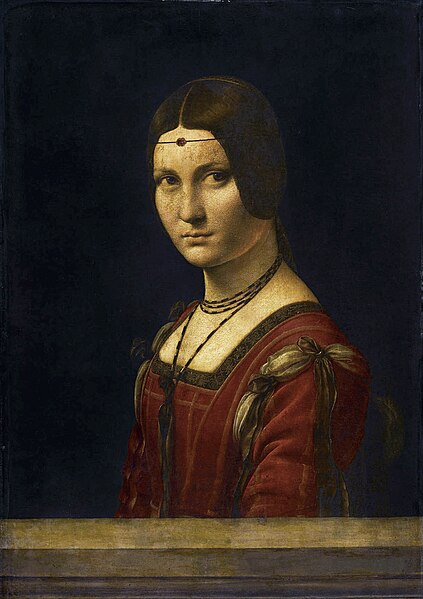La Belle Ferronnière is a portrait of a lady, usually attributed to Leonardo da Vinci, in the Louvre. It is also known as Portrait of an Unknown Woman. The painting's title, applied as early as the seventeenth century, identifying the sitter as the wife or daughter of an ironmonger, was said to be discreetly alluding to a reputed mistress of Francis I of France, married to a certain Le Ferron. Later she was tentatively identified as Lucretia Crivelli, a married lady-in-waiting to Duchess Beatrice of Milan, who became another of the Duke's mistresses.
La Belle Ferronnière
Bella Ferronnière and the alleged portrait of Beatrice d'Este compared: the pose is similar, but the clothing is different; even the look varies significantly.
The Lady with an Ermine is a portrait painting widely attributed to the Italian Renaissance artist Leonardo da Vinci. Dated to c. 1489–1491, the work is painted in oils on a panel of walnut wood. Its subject is Cecilia Gallerani, a mistress of Ludovico Sforza, Duke of Milan; Leonardo was painter to the Sforza court in Milan at the time of its execution. It is the second of only four surviving portraits of women painted by Leonardo, the others being Ginevra de' Benci, La Belle Ferronnière and the Mona Lisa.
Lady with an Ermine
Detail of the lady's head
Detail of the ermine
"Monuments Men" – Frank P. Albright, Everett Parker Lesley, Joe D. Espinosa – and Polish liaison officer Karol Estreicher pose with the painting upon its return to Poland in April 1946.






